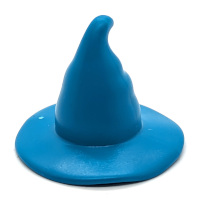The Linear Model
Univariate Statistics and Methodology using R
Psychology, PPLS
University of Edinburgh
Model Comparison
Where we Were

...
(Intercept) 321.24 91.05 3.53 0.00093 ***
BloodAlc 32.28 8.88 3.64 0.00067 ***
...Intercept and Slope
...
(Intercept) 321.24 91.05 3.53 0.00093 ***
BloodAlc 32.28 8.88 3.64 0.00067 ***
...What If We Know Nothing

there is no relationship between our independent and dependent variables
- equivalent to “not knowing” the independent variable
- if we’ve measured a bunch of RTs but nothing else, our best estimate of a new RT is the mean RT
y ~ 1 or RT ~ 1
The Null Model
- how much better is
RT ~ BloodAlcthanRT ~ 1?
Simplify the Data
Total Sum of Squares
\[ \textrm{total SS}=\sum{(y - \bar{y})^2} \]
sum of squared differences between observed \(y\) and mean \(\bar{y}\)
= total amount of variance in the data
= total unexplained variance from the null model
Residual Sum of Squares
\[\textrm{residual SS} = \sum{(y - \hat{y})^2}\]
sum of squared differences between observed \(y\) and predicted \(\hat{y}\)
= total unexplained variance from a given model in the data
Model Sum of Squares
\[ \textrm{model SS} = \sum{(\hat{y} - \bar{y})^2} \]
sum of squared differences between predicted \(\hat{y}\) and observed \(\bar{y}\)
total variance explained by a given model
Testing the Model: R2
\[ R^2 = \frac{\textrm{model SS}}{\textrm{total SS}} = \frac{\sum{(\hat{y}-\bar{y})^2}}{\sum{(y-\bar{y})^2}} \]
how much the model improves over the null
\(0 \le R^2 \le 1\)
we want \(R^2\) to be large
Testing the Model: F
\(F\) ratio depends on mean squares
\[(\textrm{MS}_x=\textrm{SS}_x/\textrm{df}_x)\]
\[F=\frac{\textrm{model MS}}{\textrm{residual MS}}=\frac{\sum{(\hat{y}-\bar{y})^2}/\textrm{df}_m}{\sum{(y-\hat{y})^2}/\textrm{df}_r}\]
how much the model ‘explains’
\(0<F\)
we want \(F\) to be large
Two Types of Significance
Call:
lm(formula = RT ~ BloodAlc, data = dat)
Residuals:
Min 1Q Median 3Q Max
-115.92 -40.42 1.05 42.93 126.64
Coefficients:
Estimate Std. Error t value Pr(>|t|)
(Intercept) 321.24 91.05 3.53 0.00093 ***
BloodAlc 32.28 8.88 3.64 0.00067 ***
---
Signif. codes: 0 '***' 0.001 '**' 0.01 '*' 0.05 '.' 0.1 ' ' 1
Residual standard error: 55.8 on 48 degrees of freedom
Multiple R-squared: 0.216, Adjusted R-squared: 0.2
F-statistic: 13.2 on 1 and 48 DF, p-value: 0.000673Two Types of Significance
Call:
lm(formula = RT ~ BloodAlc, data = dat)
Residuals:
Min 1Q Median 3Q Max
-115.92 -40.42 1.05 42.93 126.64
Coefficients:
Estimate Std. Error t value Pr(>|t|)
(Intercept) 321.24 91.05 3.53 0.00093 ***
BloodAlc 32.28 8.88 3.64 0.00067 ***
---
Signif. codes: 0 '***' 0.001 '**' 0.01 '*' 0.05 '.' 0.1 ' ' 1
Residual standard error: 55.8 on 48 degrees of freedom
Multiple R-squared: 0.216, Adjusted R-squared: 0.2
F-statistic: 13.2 on 1 and 48 DF, p-value: 0.000673Two Types of Significance
...
Multiple R-squared: 0.216, Adjusted R-squared: 0.2
F-statistic: 13.2 on 1 and 48 DF, p-value: 0.000673- \(F\)-statistic comes from comparison of model with null model
Two Types of Significance
- in fact, because comparison is implicit:
Analysis of Variance Table
Model 1: RT ~ 1
Model 2: RT ~ BloodAlc
Res.Df RSS Df Sum of Sq F Pr(>F)
1 49 190340
2 48 149223 1 41117 13.2 0.00067 ***
Analysis of Variance Table
Response: RT
Df Sum Sq Mean Sq F value Pr(>F)
BloodAlc 1 41117 41117 13.2 0.00067 ***
Residuals 48 149223 3109 Summarising…
Adding a predictor of blood alcohol improved the amount of variance explained over the null model (R2=0.22, F(1,48)=13.2, p=.0007).
- we also have the \(t\)-statistic describing the effect…
Hold On

- we’ve made a lot of assumptions
Assumptions
The Most Important Rule
The Most Important Rule
- look at your data, not just the statistics
Anscombe’s Quartet
Anscombe (1973)
Assumptions of Linear Models
required
linearity of relationship(!)
for the residuals:
- normality
- homogeneity of variance
- independence
desirable
- no ‘bad’ (overly influential) observations
Residuals
\[y_i=b_0+b_1\cdot{}x_i+\epsilon_i\]
\[\color{red}{\epsilon\sim{}N(0,\sigma)~\text{independently}}\]
- normally distributed (mean should be \(\simeq{}\) zero)
homogeneous (differences from \(\hat{y}\) shouldn’t be systematically smaller or larger for different \(x\))
independent (residuals shouldn’t influence other residuals)
At A Glance
Call:
lm(formula = RT ~ BloodAlc, data = dat)
Residuals:
Min 1Q Median 3Q Max
-115.92 -40.42 1.05 42.93 126.64
Coefficients:
Estimate Std. Error t value Pr(>|t|)
(Intercept) 321.24 91.05 3.53 0.00093 ***
BloodAlc 32.28 8.88 3.64 0.00067 ***
---
Signif. codes: 0 '***' 0.001 '**' 0.01 '*' 0.05 '.' 0.1 ' ' 1
Residual standard error: 55.8 on 48 degrees of freedom
Multiple R-squared: 0.216, Adjusted R-squared: 0.2
F-statistic: 13.2 on 1 and 48 DF, p-value: 0.000673In More Detail
In More Detail
In More Detail
In More Detail
Q-Q Plots
Q-Q Plots
x axis
from our residuals, what values are (say) 5%, or 10%, of observations found to be less than?
convert to “standard deviations from the mean”
- Q-Q Plot shows these values plotted against each other
In More Detail
normality
Q-Q plot compares the residuals \(\epsilon\) against a known distribution (here, normal)
observations close to the straight line mean residuals are approximately normal
- numbered points refer to row numbers in the original data
In More Detail
What about Independence?
no easy way to check independence of residuals
in part, because it depends on the source of the observations
one determinant might be a single person being observed multiple times
e.g., my reaction times might tend to be slower than yours
\(\rightarrow\) multivariate statistics
Independence
another determinant might be time
observations in a sequence might be autocorrelated
can be checked using the Durbin-Watson Test from the
carpackage
Visual vs Other Methods
more statistical ways of checking assumptions will be introduced in labs
they tend to have limitations (for example, they’re susceptible to sample size)
nothing beats looking at plots like these (and
plot(<model>)makes it easy)
Assumption Checking
there are no criteria for deciding exactly when assumptions are sufficiently met
- it’s a matter of experience and judgement
we need to talk about influence
Influence
Influence
even substantial outliers may only have small effects on the model
here, only the intercept is affected
Influence
- observations with high leverage are inconsistent with other data, but may not be distorting the model
Influence
- we care about observations with high influence (outliers with high leverage)
Cook’s Distance
- a standardised measure of “how much the model differs without observation \(i\)”
![]() Cook’s Distance
Cook’s Distance
\[D_i=\frac{\sum_{j=1}^{n}{(\hat{y}_j-\hat{y}_{j(i)})^2}}{(p+1)\hat{\sigma}^2}\]
- \(\hat{y}_j\) is the \(j\)th fitted value
- \(\hat{y}_{j(i)}\) is the \(j\)th value from a fit which doesn’t include observation \(i\)
- \(p\) is the number of regression coefficients
- \(\hat{\sigma}^2\) is the estimated variance from the fit, i.e., mean squared error

Cook’s Distance
Cook’s Distance
So Now We Know…
- the relationship is approximately linear
- the residuals are approximately normal
- the variance is approximately homogeneous
- we believe the observations are independent
- there are no overly-influential observations

Call:
lm(formula = RT ~ BloodAlc, data = dat)
Residuals:
Min 1Q Median 3Q Max
-115.92 -40.42 1.05 42.93 126.64
Coefficients:
Estimate Std. Error t value Pr(>|t|)
(Intercept) 321.24 91.05 3.53 0.00093 ***
BloodAlc 32.28 8.88 3.64 0.00067 ***
---
Signif. codes: 0 '***' 0.001 '**' 0.01 '*' 0.05 '.' 0.1 ' ' 1
Residual standard error: 55.8 on 48 degrees of freedom
Multiple R-squared: 0.216, Adjusted R-squared: 0.2
F-statistic: 13.2 on 1 and 48 DF, p-value: 0.000673- we are ready to report our observations
What We Know
Adding a predictor of blood alcohol improved the amount of variance explained over the null model (R2=0.22, F(1,48)=13.2, p=.0007). Reaction time slowed by 32.3 ms for every additional 0.01% blood alcohol by volume (t(48)=3.64, p=.0007).
Learning to Read
Learning to Read

the Playmo School has been evaluating its reading programmes, using 50 students
ages of students
hours per week students spend reading of their own volition
whether they are taught using phonics or whole-word methods
outcome: “reading age”
Learning to Read

| age | hrs_wk | method | R_AGE |
|---|---|---|---|
| 10.0 | 5.1 | phonics | 14.1 |
| 8.0 | 4.4 | phonics | 11.8 |
| 9.3 | 5.8 | phonics | 13.8 |
| 8.7 | 5.4 | phonics | 13.3 |
| 10.2 | 4.6 | phonics | 14.3 |
| 10.5 | 4.6 | word | 9.6 |
| 9.4 | 4.6 | word | 8.0 |
| 8.6 | 3.6 | word | 6.6 |
| 8.1 | 4.4 | word | 7.5 |
| 6.1 | 5.1 | word | 5.5 |
Learning to Read

| age | hrs_wk | method | R_AGE |
|---|---|---|---|
| 10.0 | 5.1 | phonics | 14.1 |
| 8.0 | 4.4 | phonics | 11.8 |
| 9.3 | 5.8 | phonics | 13.8 |
| 8.7 | 5.4 | phonics | 13.3 |
| 10.2 | 4.6 | phonics | 14.3 |
| 10.5 | 4.6 | word | 9.6 |
| 9.4 | 4.6 | word | 8.0 |
| 8.6 | 3.6 | word | 6.6 |
| 8.1 | 4.4 | word | 7.5 |
| 6.1 | 5.1 | word | 5.5 |
Does Practice Affect Reading Age?
hours per week is correlated with reading age: r=0.3812, p=0.0063
we can use a linear model to say something about the effect size
Does Practice Affect Reading Age?
- each extra hour spent reading a week adds 1.193 years to reading age
A Linear Model
Call:
lm(formula = R_AGE ~ hrs_wk, data = reading)
Residuals:
Min 1Q Median 3Q Max
-5.813 -1.826 -0.017 2.426 4.729
Coefficients:
Estimate Std. Error t value Pr(>|t|)
(Intercept) 4.069 2.119 1.92 0.0608 .
hrs_wk 1.193 0.417 2.86 0.0063 **
---
Signif. codes: 0 '***' 0.001 '**' 0.01 '*' 0.05 '.' 0.1 ' ' 1
Residual standard error: 2.7 on 48 degrees of freedom
Multiple R-squared: 0.145, Adjusted R-squared: 0.127
F-statistic: 8.16 on 1 and 48 DF, p-value: 0.00631but…
Assumptions Not Met!
it seems that the assumptions aren’t met for this model
(another demonstration on the right)
one reason for this can be because there’s still systematic structure in the residuals
i.e., more than one thing which can explain the variance
Adding Age into the Equation
so far, have focused on effects of practice
but presumably older children read better?
| age | hrs_wk | method | R_AGE |
|---|---|---|---|
| 9.982 | 5.137 | phonics | 14.090 |
| 8.006 | 4.353 | phonics | 11.762 |
| 9.349 | 5.808 | phonics | 13.838 |
| 8.620 | 3.612 | word | 6.620 |
| 8.060 | 4.447 | word | 7.524 |
| 6.117 | 5.085 | word | 5.502 |
Another Model
Another Model
Call:
lm(formula = R_AGE ~ age, data = reading)
Residuals:
Min 1Q Median 3Q Max
-3.642 -2.601 -0.454 2.280 4.543
Coefficients:
Estimate Std. Error t value Pr(>|t|)
(Intercept) 4.238 1.904 2.23 0.0307 *
age 0.699 0.225 3.10 0.0032 **
---
Signif. codes: 0 '***' 0.001 '**' 0.01 '*' 0.05 '.' 0.1 ' ' 1
Residual standard error: 2.66 on 48 degrees of freedom
Multiple R-squared: 0.167, Adjusted R-squared: 0.15
F-statistic: 9.62 on 1 and 48 DF, p-value: 0.00323- R2=0.17
Two Models, No Answers
we now have two models that don’t map well to assumptions
each suggests an effect
one of
ageone of
hrs_wk
if we run them independently, the chances of a type 1 error are
\(\frac{1}{20}\) (
mod, includinghrs_wk)\(\frac{1}{20}\) (
mod2, includingage)
or \(\frac{1}{10}\) overall
- we need to test multiple predictors in one linear mod
Model Equations Again
\[\color{red}{\textrm{outcome}_i}=\color{blue}{(\textrm{model})_i}+\textrm{error}_i\]
\[\color{red}{y_i}=\color{blue}{b_0}\cdot{}\color{orange}{1}+\color{blue}{b_1}\cdot{}\color{orange}{x_i}+\epsilon_i\]
linear model with two predictors
\[\color{red}{y_i}=\color{blue}{b_0}\cdot{}\color{orange}{1}+\color{blue}{b_1}\cdot{}\color{orange}{x_{1i}}+\color{blue}{b_2}\cdot{}\color{orange}{x_{2i}}+\epsilon_i\]
\[\color{red}{\hat{y}_i}=\color{blue}{b_0}\cdot{}\color{orange}{1}+\color{blue}{b_1}\cdot{}\color{orange}{x_{1i}}+\color{blue}{b_2}\cdot{}\color{orange}{x_{2i}}\]
Two Predictors
\[\color{red}{y_i}=\color{blue}{b_0}\cdot{}\color{orange}{1}+\color{blue}{b_1}\cdot{}\color{orange}{x_{1i}}+\color{blue}{b_2}\cdot{}\color{orange}{x_{2i}}+\epsilon_i\]
\[\color{red}{\hat{y}_i}=\color{blue}{b_0}\cdot{}\color{orange}{1}+\color{blue}{b_1}\cdot{}\color{orange}{x_{1i}}+\color{blue}{b_2}\cdot{}\color{orange}{x_{2i}}\]
Running A Multiple Regression
Call:
lm(formula = R_AGE ~ age + hrs_wk, data = reading)
Residuals:
Min 1Q Median 3Q Max
-3.820 -2.382 0.074 2.404 3.549
Coefficients:
Estimate Std. Error t value Pr(>|t|)
(Intercept) 0.518 2.422 0.21 0.832
age 0.578 0.222 2.61 0.012 *
hrs_wk 0.945 0.406 2.33 0.024 *
---
Signif. codes: 0 '***' 0.001 '**' 0.01 '*' 0.05 '.' 0.1 ' ' 1
Residual standard error: 2.55 on 47 degrees of freedom
Multiple R-squared: 0.253, Adjusted R-squared: 0.221
F-statistic: 7.97 on 2 and 47 DF, p-value: 0.00105Running a Multiple Regression
...
(Intercept) 0.518 2.422 0.21 0.832
age 0.578 0.222 2.61 0.012 *
hrs_wk 0.945 0.406 2.33 0.024 *
...there are independent effects of age and practice
reading age improves by 0.58 years for each year of age
reading age improves by 0.95 years for each hour of practice
the intercept (0 years old, 0 hours/week) is meaningless!
- important question: is this model better than a model based just on age?
Model Fit
...
Multiple R-squared: 0.253, Adjusted R-squared: 0.221
...in multiple regression, R2 measures the fit of the entire model
- sum of individual R2s if predictors not correlated
R2=0.25 looks better than the R2 for
mod2(ageas a predictor) of 0.17but any predictor will improve R2 (chance associations guarantee this)
...
Multiple R-squared: 0.196, Adjusted R-squared: 0.161
...Comparing Models
...
Multiple R-squared: 0.253, Adjusted R-squared: 0.221
F-statistic: 7.97 on 2 and 47 DF, p-value: 0.00105F ratio compares model to the null model
but we can also compare models in succession
Analysis of Variance Table
Model 1: R_AGE ~ 1
Model 2: R_AGE ~ age
Model 3: R_AGE ~ age + hrs_wk
Res.Df RSS Df Sum of Sq F Pr(>F)
1 49 409
2 48 340 1 68.2 10.50 0.0022 **
3 47 305 1 35.3 5.43 0.0241 *
---
Signif. codes: 0 '***' 0.001 '**' 0.01 '*' 0.05 '.' 0.1 ' ' 1Comparing Models
explicit way
Analysis of Variance Table
Model 1: R_AGE ~ 1
Model 2: R_AGE ~ age
Model 3: R_AGE ~ age + hrs_wk
Res.Df RSS Df Sum of Sq F Pr(>F)
1 49 409
2 48 340 1 68.2 10.50 0.0022
3 47 305 1 35.3 5.43 0.0241Order Matters!
age then hrs_wk
Analysis of Variance Table
Response: R_AGE
Df Sum Sq Mean Sq F value Pr(>F)
age 1 68.2 68.2 10.50 0.0022
hrs_wk 1 35.3 35.3 5.43 0.0241
Residuals 47 305.2 6.5 Order Matters!
- order affects F ratios because R, by default, uses Type 1 sums of squares
- calculate each predictor’s improvement to the model in turn
- compare to Type 3 sums of squares
- calculate each predictor’s improvement to the model taking all other predictors into account
- in R, predictors should be entered into the model in a theoretically-motivated order
 Cook’s Distance
Cook’s Distance